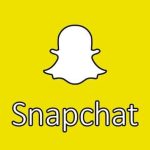When playing cards with your Brisbane Kids, it doesn’t matter where you are – in a doctor’s waiting room, at the dinner table, or in the tent during a rainy camping trip. This list of six easy card games will keep your Brisbane Kids entertained for hours if it’s been a while since you shuffled and dealt a deck.
The best part is that all six games can be played with one standard deck of cards. Make sure you always have a pack in your glove box, your handbag, and your house so you will never have to worry about being bored!

1. Go Fish/Fish
Object of the game: Collect as many sets of four as you can.
Players: Children ages four and up, two to six players per team.
The deck: Either a standard 52-card deck or a junior deck tailored to the player’s needs.
Gameplay: If three to six players are involved, each player receives five cards. A total of seven cards are dealt to each player when there are only two players. A draw pile is created by laying all remaining cards face down. The player who goes first will be chosen at random.
You may ask one of your opponents for a particular card rank on your turn. In order to obtain the requested rank, you must already possess at least one card of that rank. You must request that the player give you all of her cards of the requested rank if she has any cards of that rank.
The player you ask gets another turn if he or she provides you with one or more cards. If you already possess a rank, you may ask any player for that rank, including the one you requested just now.
The person you ask will typically respond, “Go fish.” You then draw a card from the draw pile if they do not have any relevant cards.
In the event that you draw a card of the rank requested, you will get another turn if the other players see it. It is the next player’s turn if the card you draw does not correspond to the rank you requested. Regardless of the rank of the card, you keep it. Next, the player who said “Go fish” will take the lead.
You should immediately show the four cards that you have collected to the other players and place them face down before you.
A game of Go Fish continues until either everyone has no cards left in their hand or the draw pile runs out. Winners are determined by the number of sets of four they have.
2. Old Maid
Object of the game: It is important to avoid being the player who holds the Old Maid at the end of the game.
Players: Players should be between the ages of four and eight.
The deck: Decks of 52 cards are standard. Three queens should be removed from the deck. As for the remaining queen, she is known as the Old Maid. You can also use a junior version tailored to your needs.
Gameplay: The cards should be dealt as evenly as possible among the participants. There is no problem with some players having more cards than others.
Each player sorts his or her cards and discards any pairs of cards. It is customary for the player to discard two cards of a kind and keep the third if he has three of a kind. He then offers his hand, face down, to the player on his left. One card is randomly selected by that player from the dealer. When the card matches one that he already has in his hand, he places the pair on the table. The item is kept if it is not.
Players play clockwise from the dealer, so the player to his left offers his hand face down to the player on his left. The cycle is repeated until there are no more pairs and the Old Maid is the only card remaining.
There is only one card in play at the end of the game, which is the Old Maid. When the Old Maid is held, the person who holds it loses.
3. Concentration/Memory
Object of the game: The goal is to collect as many pairs of cards as possible.
Players: Children between the ages of three and six are welcome.
The deck: It consists of 52 cards. In a pattern (e.g. 4 cards x 13 cards), shuffle the cards and lay them face down on the table.
Gameplay: It is the youngest player who goes first. The game proceeds clockwise from there.
Every turn, players turn over two cards (one at a time) and keep the ones that match the numbers. A player gets another turn if they successfully match a pair of numbers.
It becomes the turn of the next player when two cards are turned over that don’t match numbers.
You can remove cards in groups of four (e.g. all the two’s and three’s) to make the game easier.
The player with the most pairs wins when all pairs have been found.
4. Snap
Object of the game: The goal is to win all the cards.
Players: The game can be played by two to twelve players, ages three and older.
The deck: Snap cards are available in standard 52-card decks or junior decks. During the deal, the dealer shuffles the cards and distributes them equally to all of the players. It’s okay if some players have more cards than others. During the game, each player puts his cards face down in front of him in a pile.
Gameplay: It is the player to the left of the dealer who goes first. Following this, the game proceeds in a clockwise direction.
On each player’s turn, he or she turns over the top card from his or her face-down pile.
Players compete to be the first to yell “Snap!” when someone turns over a card that matches one that is already face up on another player’s pile. Both heaps are won by the first person to yell “Snap!” and are added to the bottom of the player’s face-down pile.
A player who incorrectly cries “Snap!” must turn over his top card to the person who just played. A player must pass his top card to the person to his right if he makes a mistake during his own turn.
The game goes on until one person collects all the cards. The game is won by that player.
5. Scumbags and Warlords/Rascals and Royalty
Object of the game: To earn the “royalty” by becoming the first player in a round of play to discard all of their cards. Each player seeks to avoid being the “rascal,” or the one left with cards, if they are succesful.
Players: Children aged 8 and older should play this game, which requires a minimum of three players.
The deck: A regular 52-card deck is required. The traditional order of the cards is 2 as the highest card, followed by the Ace, King, Queen, and Jack, and then 10-3. There are a few alternatives.
Game Play: Even if the distribution is not equal, distribute all the cards. First, a card or group of cards of the same rank are laid face up by the player on the dealer’s left. The next player can choose to pass or make a play that is better than that rating. The player must play the same amount of cards and they must rank higher in order to surpass the previous cards. As an illustration, a player plays two tens.
Next, the player may play two Jacks, but not three nines or three Kings because these are lower in rank. It is also possible for her to play two Kings. Passing is an option if the player does not have any suitable cards.
A new card may be led by the final player if three successive players are not able to beat the previous cards played.
The first player to run out of cards on the next round will be the “royalty,” but play continues until all players except one are out. If anyone remains with cards after everyone else has exhausted their stock, they are declared the “rascal” and must deal the next hand.
6. Spoons/Donkey
Object of the game: It is important to be the first to collect four identical cards. Your goal is to not be last (or you’ll be declared a “donkey”) to achieve that goal if an opponent beats you to it.
Players: Three to thirteen players can play this game and it is recommended for children ages eight and up.
The deck: It consists of 52 cards. Four identical cards must be drawn from the deck for each player. The Aces, 2s, 3s, 4s, and 5s are suitable for five players, for example. A spoon will also be needed for each player, minus one. For instance, if you have eight players, you’ll need seven spoons. Use chocolates instead of spoons for a fun and tasty alternative!
Game play: Deal the cards to the players after they have been shuffled. A total of four cards will be dealt to each player. Make sure that the spoons are placed in the middle of the table so that all players can access them.
A player selects one card from their hand, passes it to their opponent on their left, and picks up the card they have received from their opponent on their right. It is not permitted for a player to have more than four cards in his or her hand at any given time.
Whenever a player collects four of a kind, he or she places a spoon in front of themselves as subtly as possible.
In response to one player’s action, all other players should follow suit as quickly as possible. The player who grabs the spoon last is eliminated from the game. Play another round by removing a set of four cards from the deck. Winners of the game are the last two players.








